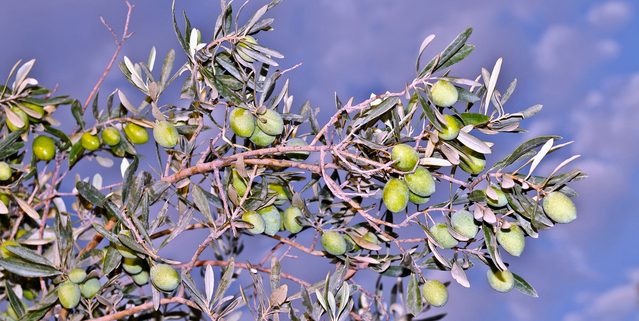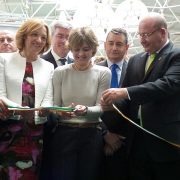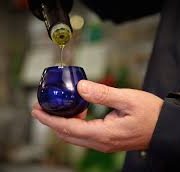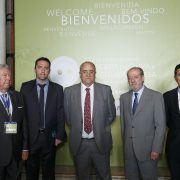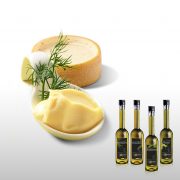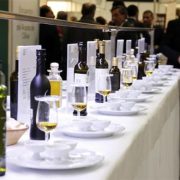Green gold that knows no boundaries
At the gates of the XVIII Montoro Olive Fair, held from 11 to 14 May, there is no better example how culture gets behind the economic growth of an area, such as Córdoba (Spain). But the olive grove has ceased to be an emblem of the Mediterranean to spread widely around the world: 11 million hectares. Cropping systems located under irrigation hedgerow profitability extract fruit which then will be the most acclaimed by consumers oil.
The XVIII Fair Olivo of Montoro aims to highlight the economic importance of the olive sector, find solutions to the difficult and complex problems of production and marketing of their products, presenting the latest innovations in machinery, technological and scientific advances. This known agricultural area joins many others in Spain, the leading producer, Portugal, Italy, Greece, Tunisia, Turkey, etc. of the two shores of the Mediterranean, an area that accounts for 73% of global culture.
But the olive spreads throughout the world and now occupies 11 million hectares, according to the study Wetsfalia Separator GEA Ibérica. It is the first permanent crop that is present on the five continents. In Africa, Morocco and Tunisia are the main countries of the continent where entrenched. In America, Chile, Argentina, Uruguay and Peru include. Saudi Arabia, China and India are the fastest growing Asian countries where. In Oceania, while Australia is leading surface it is New Zealand who is leading the growth of the olive grove. In Europe, Portugal is the country experiencing more hectares increased.
Two aspects influence the evolution of culture, as is clear from that report: relation to prices of crop season (cereal, oil) and permanent crops (walnut, almond) subject to increasing demand on the one hand, and other restructuring olive plantations in hedge models in Spain, Greece, Italy, Tunisia or Turkey. By main varieties in the new plantations are Arbequina, arbosana, koroneiki, and picual.
International Trade
The International Olive Oil Council provides that trade in olive oil and olive pomace oil during the first five months of the marketing year 2015/16 (October 2015 – February 2016) reflect an increase of 22% in China, 2% in Canada and unchanged in the United States with similar values to the same period of the previous season. Negative signs are observed in other markets: -41% in Brazil, 30% in Russia, Australia and -16% -13% in Japan.
In the EU, during the first four months of the season (October 2015 – January 2016), Intra-EU acquisitions decreased -14% and -4% Extra-EU imports over the same period of the previous season.
Gate prices in Spain, leading producer, reached maximum values in August 2015 (4.23 € / kg) in Extra Virgin Olive Oil (EVOO). After a sharp decline in recent weeks they remain stable standing slightly in the last week of April 2016 at 3.16 € / kg representing a decrease of 7% over the same period last year. If we compare this price with the minimum value of the third week of May 2014 (1.96 € / kg) showed an increase of 61% and the maximum (4.23 € / kg) a decrease of -25%. (Figure 1)
In Italy, prices in AOVE Italian origin began to fall sharply after reaching a record high in November 2014 (6.79 € / kg). In recent weeks they remained stable reaching the end of April 2016 (3.55 € / kg) -40% over the same period last year.
New olive groves
Researchers from the Polytechnic University of Madrid (UPM) show that hedge plantations are highly productive when the orientation of rows and distance can maximize the intercepted solar radiation. The Spanish production, according to the International Olive Oil Council (IOOC), accounts for 45% olive oil and 22% of table olives in the world. Based on these figures it is in the large area devoted to olive grove in Spain. But to maintain this hegemony agree that part of his olive grove adopt new design and management to increase their profitability and competitiveness.
UPM scientists working since 2006 in various research projects focused on improving the design and management of the olive grove in hedge. In this type of olive tree tops form a continuous vegetation structure. The aim of this olive grove, highly productive, is to get the mechanization of harvesting the olives with a modified and adapted to the bulkier hedges olive harvester.
Their investigations show that the orientation of the rows of olive groves in hedge determines the amount of the oil obtained and quality. For added benefits it was crucial to know how the orientation of the rows of trees and the distance between them and the structure of the hedge, affect the interception of radiation. In order to establish the optimal characteristics of the hedge he has worked on the development of mathematical models calibrated with field data, to simulate the production differences between olive groves of different characteristics.
UPM study also addressed the effect of planting density on oil production. It has been found that reducing the distance between the lines of hedges of 5 2.5 meters assumed increases in oil production in some directions, namely north-south, not in general, because in east-west production was not affected.
Irrigation under control, healthier olive oil
Another team of researchers finds that some of the beneficial effects of virgin olive oil minor compounds that can increase with sustainable irrigation strategies should be.
Researchers from the Polytechnic University of Madrid (UPM), the Center for Soil Science and Applied Biology Segura (CEBAS-CSIC), the Institute of Biomolecules Max Moussseron (IBMM) at the University of Montpellier and the Agrarian Centre Chaparrillo Board Castilla-La Mancha have conducted experimental work in watering an olive grove to test the effects of water stress on both the quantity and quality of the resulting oil. After two years of work they have demonstrated that the use of deficit irrigation does not affect the amount of production but causes in oil increased the content of phytoprostanes, components beneficial oil for health, so it looks like a best practice in olive irrigation, as also is more sustainable for the environment.
Although olive cultivation has been traditionally done in dry conditions, it has been shown that irrigation is a fundamental practice in improving oil production and productivity. However, in recent years, the conditions of arid climate and the persistent shortage of water must be added a strong competition with other non-agricultural users. Therefore, to address this shortage of water, sustainable irrigation should combine increased production with minimal use of water.
The deficit irrigation is therefore a good practice in olive irrigation for healthier, as well as being more environmentally sustainable food. The Ministry of Agriculture of Andalusia launched a new web application that allows to calculate the irrigation needs in most types of this culture and which can be accessed from desktops, laptops and adapted to other mobile devices, it is applicable both olive grove several feet as intensive cultivation and hedge, according to EFE.
The difference tool among adults and young olive trees and allows the user to make a rational plan based on net subscriber nutritional needs of the tree, according to the Board of Andalusia.
This service is aimed at both individual farmers and technicians of irrigators communities, associations Integrated Production (API), cooperatives and advisory services, as possible, by a single register as a user, define different owners for a program of watering and fertilizing.
The application uses the methodology of the balance of water collected in an official manual of the United Nations Food and Agriculture Organization (FAO) to calculate the irrigation best suited to each farm and computes crop evapotranspiration using data climate of Agro-climatic Information Network of Andalusia (RIA) that manages the IFAPA.
Source: Government of Andalusia, IFAPA, EFE, UPM, IOC




